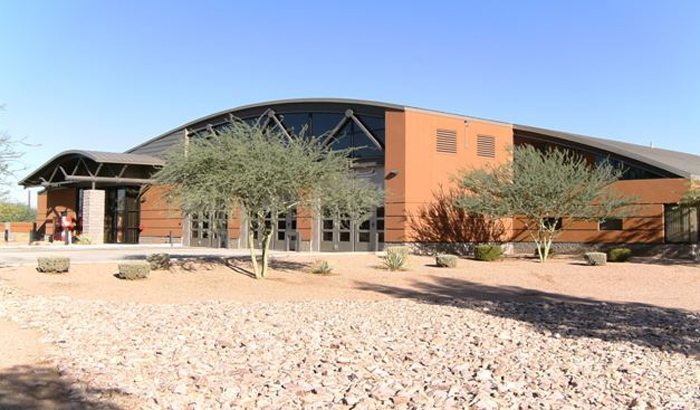The green building movement, already a huge factor in the residential sector, is likely to transform commercial construction as well. One pundit claims it will transform building in the same way electric lights and air conditioning did last century.
Insulating concrete forms (ICFs) are well-positioned to take advantage of this trend; they’re durable, energy-efficient, and widely available. Among the various types of ICFs on the market, perhaps the most environmentally or Earth Friendly are the so-called composite ICFs, blocks made from a mix of expanded polystyrene (EPS) and Portland cement.
Dan Chouinard with Earth Friendly Building Materials LLC (EFBM) says. “If you’re not familiar with our product, EF Block it is an innovative ICB (Insulated Concrete Block) or ICF (Insulated Concrete Form) wall system made of over 85% Recycled EPS, Portland cement and other proprietary ingredients. It is manufactured per the IRC (International Residential Code) screen grid and HUD (US Department of Housing and Urban Development).”
Recycled Content
Composite Insulating concrete forms use a huge amount of recycled EPS that is usually destined for the landfill. “Consider how many thousands of gallons of fuel, energy and labor are saved annually by no longer running landfill equipment. Consider also that EPS is a non-biodegradable product, which means we’re saving space at landfills as well.”
Dan Chouinard, CEO of EFBM. has hard numbers to back up this assertion.
Chouinard has been contracting since 1975 and in the composite EF Block industry for more than 24 years, and is by far the largest manufacturer of this type of block.
“We use 100% post-industrial, post-consumer waste, in all of our blocks,” says Chouinard, noting that traditional ICFs are limited to 10% non-virgin materials. The foam is provided by local recycling organizations; their Tempe facility uses material collected by Arizona State University, Tempe Schools District and others.
“The most important thing is we take materials out of landfills that otherwise might stay there for 100 years or more,” he says. “We’ve done studies on a landfill. By keeping all of the EPS out of the landfill, they save $600,000-$700,000 a year in direct savings, plus 4-6% savings in landfill space.”
At EFBM, environmental consciousness is built into every EF Block made, such as regional manufacturing plants utilizing local recycled materials in our product line, offering a Return & Recycle Program to turn waste EPS into new EF Block product.
Increased Durability
“What we do is grind up the foam and coat it with cement, which changes the properties completely,” Chouinard says. “It becomes completely non-burnable, and still has a very high insulation value.”
The walls are similarly impervious to mold, termites, and other pests, Chouinard notes that this type of block will provide termite resistance without any type of pesticide or special treatment that may leach into the soil.
Chouinard also has another product called PermaCrete, that works great with EF Block it is a cementatious coating specifically tested for code compliance by the ICC-ES for ICF (EF Block) construction. No surface is stronger, and no surface is more durable. (www.PermaCrete.Com)
Less material
Composite Insulating Concrete Forms will accept drywall mud, Portland stuccos, and acrylic polymers (sometimes called textured acrylic finishes) applied directly to the block. Other wall types, including traditional Insulating concrete forms, must be coated with 5/8” drywall to meet fire code.
Composite blocks do not require drywall, although most builders install it anyway.
Chouinard notes that because composite ICFs are heavy—about 10 pounds a sq. ft.—and are ten times as dense as pure EPS foam, they require less bracing during construction. “We’re all trying to save trees,” says Chouinard. “Reduced bracing and seam reinforcement means using less wood used in construction.”
There are other savings as well, such as using less petroleum to make virgin EPS beads, and less cement, which is a notoriously energy-intense process.
“EF Blocks screen grid design will use 30% less concrete than a comparable flat wall ICF made from all-foam,” says Chouinard. “Cement production uses an extreme amount of energy and produces a lot of carbon. By decreasing the amount of cement, we can decrease carbon emission by a significant amount.
Other considerations
Chouinard also notes that reducing the concrete in the wall translates to better insulating properties. “If we use two-thirds the concrete, then there’s one-third more insulation in the wall,” he says. When completed, the wall performs even better; its substantial thermal mass dampens sudden temperature swings.
Homeowners like the fact that the dense blocks can hold nails and screws wherever they’re driven. Builders like the fact that they can be cut and shaped with standard carpenters tools.
In the residential sector, composites may be the best option for minimizing the environmental impact of construction.
Recently Chouinard has done some testing with a post consumer product which gives maximum LEED points with just a 25% loading and is ranked so high by the feds that procurement officers MUST purchase finished products meeting the load standard. The supplier is the US Govt and so they are doubly incentivised to encourage its use.
“If LEED certification is important to the developer or owner, they will get extra points for using composite blocks,” says Chouinard, referring to the recycled material points in rating system. “When researched by people who are looking at the best, most insulated structure they can get, composites rank near the top,” says Chouinard. “They have found EF Block to be the greenest, most sustainable product out there. It’s driven by an education level of what green building is all about.

